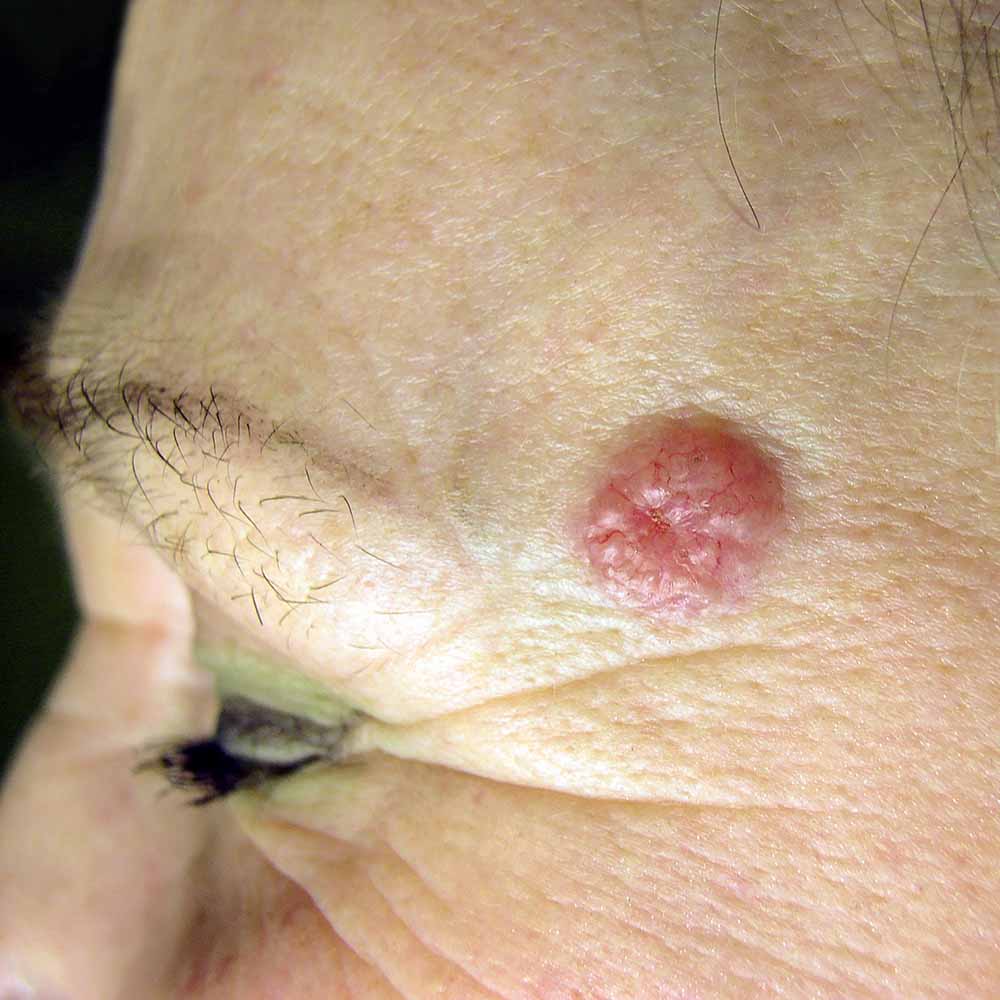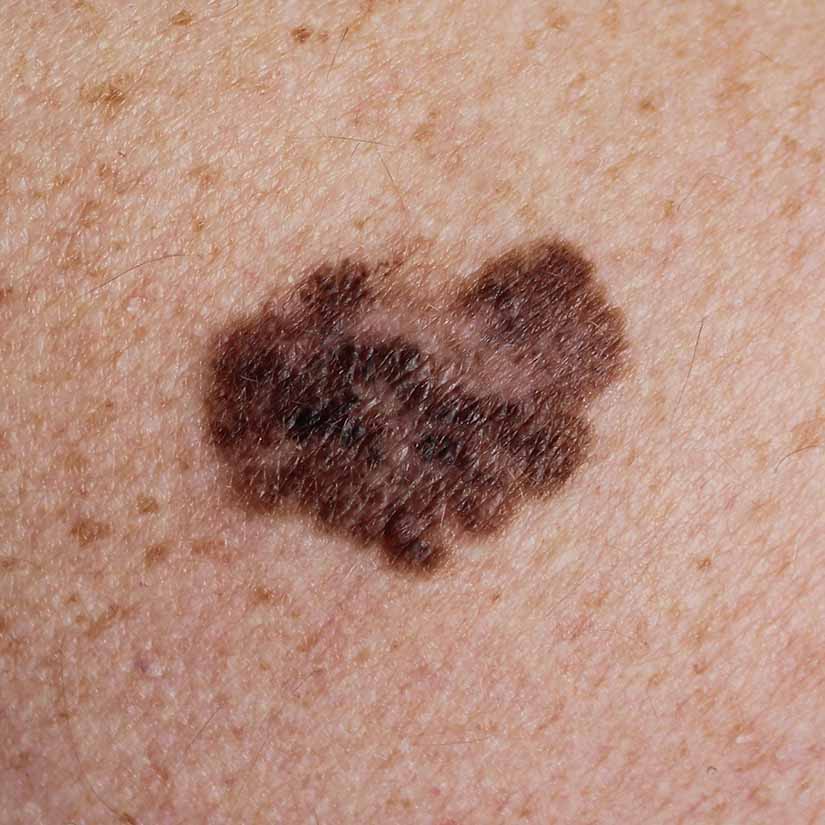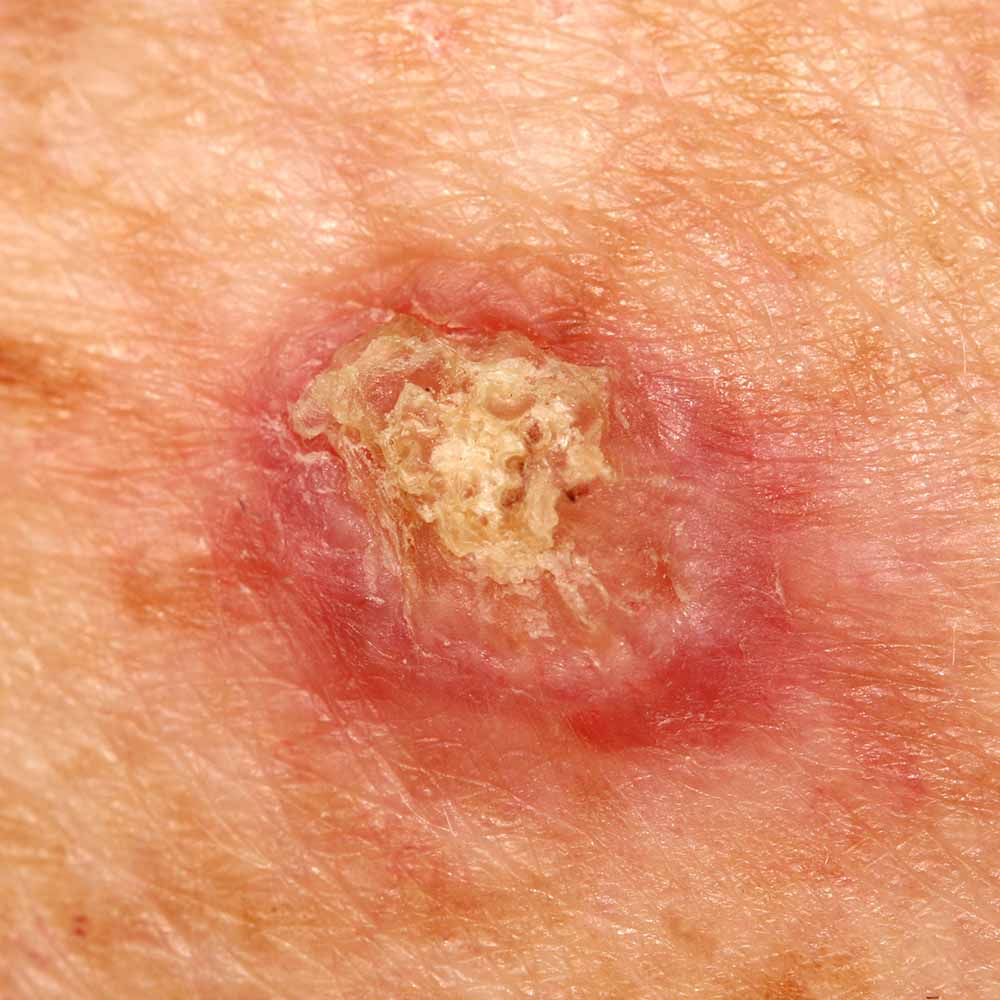Skin Cancer, Pre-Cancerous Lesions & Treatment
Home • Dermatology • Skin Cancer, Pre-Cancerous Lesions & Treatmentactinic keratosis
Actinic keratosis (AK) also known as solar keratosis, is a precancerous lesion of the epidermis (outer layer of skin) that is caused by long-term exposure to sunlight. Chronic sunlight exposure alters the keratinocytes (cells that make up the majority of the epidermis) and causes areas of your skin to become scaly, rough, discolored and sometimes tender to the touch.
AKs are most commonly found on sun-exposed areas such as the face, lips, ears, neck, scalp, forearms, and backs of hands. People who have fair skin and light-colored hair and eyes are at the greatest risk of developing AKs. Individuals who are immunosuppressed, whether by cancer chemotherapy treatments or organ transplants, and who have an immunodeficiency disorder, are also considered high risk for developing AKs.
AKs are not life threatening as long as they are diagnosed and treated in the early stages. If left untreated, aggressive AKs have the potential to progress into squamous cell carcinoma, a serious type of skin cancer.
treatment options
Physicians often diagnose and treat AKs based on clinical appearance alone, but sometimes a skin biopsy is needed. After a dermatopathologist assesses your skin tissue under a microscope and determines the lesion is an AK, your physician will discuss several treatment options with you. Your treatment may vary based on the location, size of the lesion and the amount of AKs you have developed. Your age and general health will also be taken into consideration. Common treatment options are cryosurgery (freezing lesion with liquid nitrogen), topical chemotherapy creams, photodynamic therapy (PDT or blue light), chemical peels, and laser resurfacing. Your physician will help you decide which option is best for you.
actinic keratosisbasal cell carcinoma
Basal cell carcinoma (BCC) is the most common form of skin cancer. It occurs most frequently on sun-exposed regions of the body. Although this skin cancer rarely spreads (metastasizes) to other organs of the body, it causes destruction of surrounding tissue. Thus early detection and treatment are needed.
Most basal cell carcinomas are caused by chronic sun exposure and blistering sunburns, especially in people with fair skin, light hair and blue, green or grey eyes. In a few instances, there are other contributing factors such as burns, exposure to radiation, arsenical intoxication or chronic dermatitis.
Basal cell carcinoma may have several different appearances on your skin. Some warning signs that may indicate basal cell carcinoma are an open sore, a reddish patch, a growth with an elevated border and a central indentation, a bump or nodule and a scar-like area.
treatment options
After sections of tissue from a biopsy of your skin are assessed under a microscope by a dermatopathologist and determined to be basal cell carcinoma, your dermatologist will discuss several treatment options. Your dermatologist’s choice of therapy depends on the size, location and subtype of basal cell carcinoma. Your age and general health are also taken into consideration. The more common treatment options include excisional surgery and Mohs Micrographic Surgery. Electrodessication & curettage and cryotherapy are also accepted forms of treatment in some cases. Your dermatologist will discuss these treatment options with you.
basal cell carcinomamelanoma
Melanoma is a serious form of skin cancer of melanocytes, the cells that produce dark protective pigment called melanin. Individual lesions may appear as a dark brown, black, or multicolored growth with irregular borders that can become crusted and bleed.
Melanoma may affect anyone at any age and can occur anywhere on the body. An increased risk of developing this disease is seen in people who have fair skin, light hair and eye color, a family history of melanoma or who have had melanoma in the past. These tumors can arise in or near a preexisting mole or may appear without warning. Melanomas may spread to other organs, making it essential to treat this skin cancer early.
The ABCDEs of Melanoma:
- Asymmetry: One half does not match the other half.
- Border Irregularity: The edges are notched or ragged.
- Color: Varied shades of tan, black, and brown.
- Diameter: Greater that 6 millimeters.
- Evolving: Significant change in size, shape, or shade of color.
Treatment options
After sections of tissue from a biopsy of your skin are assessed under a microscope by a dermatopathologist and determined to be melanoma, your dermatologist will discuss several treatment options. Treatment of melanoma is designed according to several variables including location, extent of spread and aggressiveness of the tumor as well as your general health. Surgical excision is the mainstay of treatment for melanoma. Depending on the characteristics of the melanoma, sometimes lymph nodes are removed and chemotherapy may be necessary. Your dermatologist will help you to better understand these treatment options.
melanomasquamous cell carcinoma
Squamous cell carcinoma (SCC) is a major type of skin cancer that arises from the outer epidermal layer of the skin and mucous membranes and occurs most commonly on areas exposed to the sun. If untreated, squamous cell carcinoma may penetrate and destroy underlying tissue. In a small percentage of cases, this tumor can spread (metastasize) to distant organs and may be fatal.
Chronic sun exposure is the leading cause of squamous cell carcinoma, especially in people with fair skin, light hair and blue, green or grey eyes.
Other factors that may contribute to the developing of this cancer include burns, scars, exposure to radiation or chemicals, chronic inflammatory conditions and immunosuppression. Although more likely to develop in fair-skinned individuals, squamous cell carcinoma may occur in dark-skinned people, especially at sites of preexisting inflammatory conditions or burns.
Signs that may indicate the presence of squamous cell carcinoma include scaly red patches, elevated growth with a central depression, wart-like growths, nodules and open sores. All of these types of lesions may develop a crusted surface or bleed.
treatment options
After sections of tissue from a biopsy of your skin are assessed under a microscope by a dermatopathologist and determined to be squamous cell carcinoma, your dermatologist will discuss several treatment options. Your dermatologist’s choice of therapy depends on the size, location and subtype of squamous cell carcinoma. Your age and general health are also taken into consideration. The more common treatment options include excisional surgery and Mohs Micrographic Surgery. Electrodessication & curettage and cryotherapy are also accepted forms of treatment in some cases. Your dermatologist will discuss these treatment options with you.
squamous cell carcinoma



